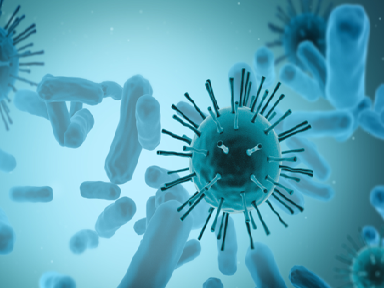worldpharmanewsJune 10, 2021
Tag: SARS-CoV-2 , St Thomas , LGALS3BP , NIHR
New research identified a novel interaction between the SARS-CoV-2 spike protein and the galectin-3-binding protein (LGALS3BP) which could be a new therapeutic anti-viral target. The research also found the presence of detectable viral RNA in blood in COVID-19 patients is a strong predictor of mortality.
The paper, published today in Nature Communications, was led by a group of researchers from King's College London, Guy's and St Thomas' NHS Foundation Trust and King's British Heart Foundation Centre. The research was funded by the NIHR Guy's and St Thomas' Biomedical Research Centre and supported by grants from BHF.

In the study, authors analysed close to 500 blood samples from patients admitted to Guy's and St Thomas' and King's College Hospitals. The authors compared plasma and serum samples between patients admitted to intensive care units (ICU) with COVID-19 and hospitalised non-ICU COVID-19 patients and non-COVID-19 patients in ICU.
Almost a quarter of COVID-19 ICU patients had detectable RNAemia - severe acute respiratory syndrome coronavirus 2 RNA - within the first six days of admission to ICU. The presence of RNAemia was a strong predictor of 28-day mortality. RNAemia was detectable in 56% of deceased patients but in only 13% of survivors.
Rising levels of LGALS3BP in the lungs offered protection to cells from the harmful effects of the SARS-CoV-2 spike protein.
The identification of LGALS3BP as a potential antiviral protein is encouraging as the UK government launched an Antivirals Taskforce in April 2021 to find effective treatments that could prevent future waves of infections and limit the effect of new variants.
Professor Manu Shankar Hari, a NIHR Clinician Scientist based at King's College London and a Consultant in Critical Care Medicine at Guy's and St Thomas', said: "We report that presence of detectable viral RNA in plasma or serum of COVID-19 patients is associated with increased risk of severe illness. We also highlight a novel interaction with potential antiviral effect between the SARS-CoV-2 spike protein and a protein called galectin-3-binding protein. Our research findings have two main implications. First, there is an unmet diagnostic technology need for near patient tests to identify presence of viral RNA in blood in COVID-19 patients. Second, our research potentially highlights an antiviral drug target, which is a priority area highlighted within the UK government's launch of a COVID-19 antivirals Taskforce."
Professor Manuel Mayr, British Heart Foundation Professor at King's College London, said: "As British Heart Foundation Professor I am delighted that we could join forces with our clinical colleagues to contribute to a better understanding of COVID-19. This is the first time blood proteins with the ability to bind to the SARS-CoV-2 spike protein have been analysed thanks to the specialised equipment available in King's British Heart Foundation Centre."
Gutmann, C., Takov, K., Burnap, S.A. et al.
SARS-CoV-2 RNAemia and proteomic trajectories inform prognostication in COVID-19 patients admitted to intensive care.
Nat Commun 12, 3406, 2021. doi: 10.1038/s41467-021-23494-1


Contact Us
Tel: (+86) 400 610 1188
WhatsApp/Telegram/Wechat: +86 13621645194
Follow Us:




 Pharma Sources Insight January 2025
Pharma Sources Insight January 2025


